Bunkers Overlook – A Legacy
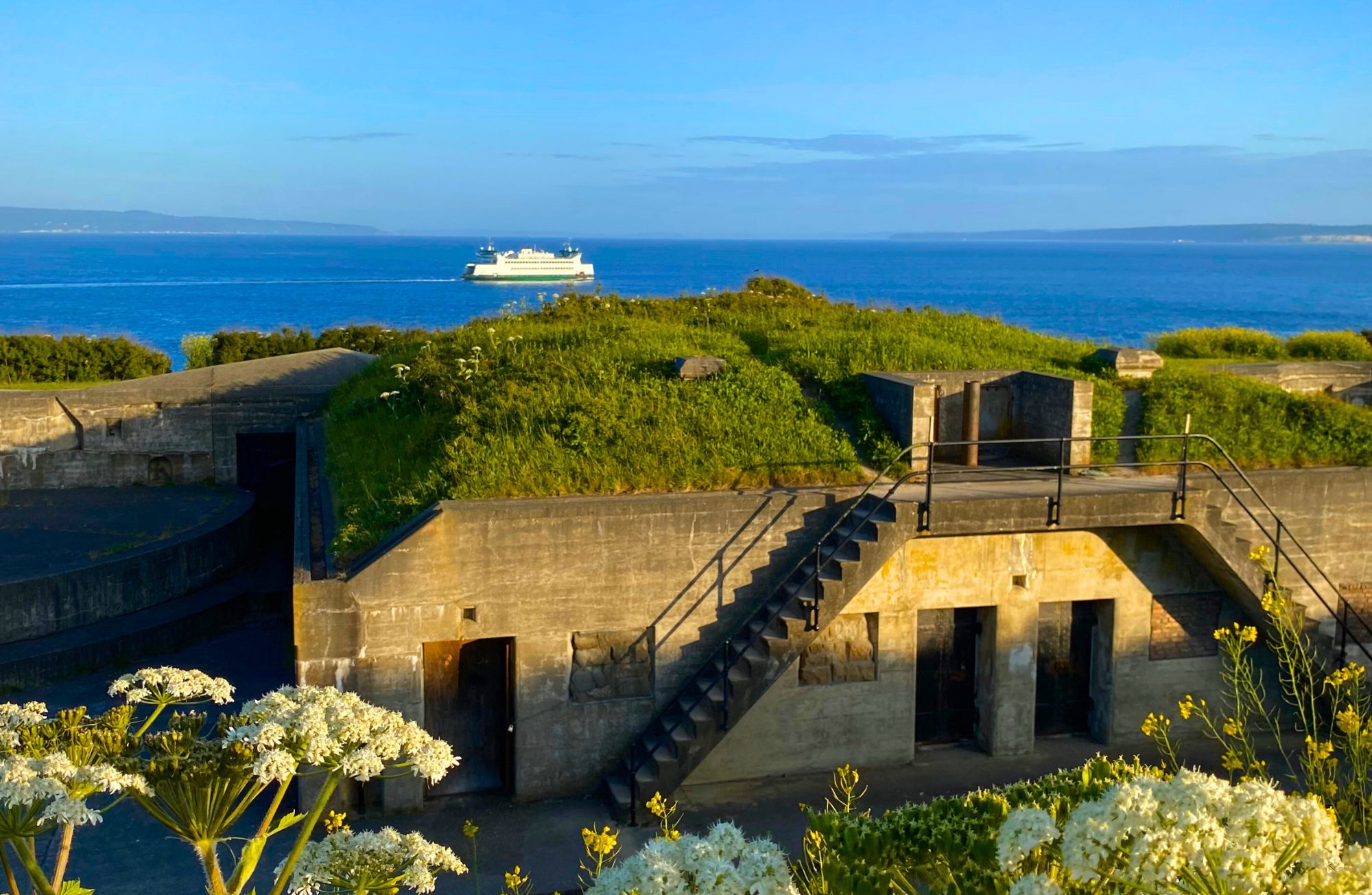
The Fort Casey bunkers located in Coupeville sit perched atop the cliffs overlooking Admiralty Inlet. They stand as silent sentinels of the past, remnants of a bygone era when coastal defense was paramount. These imposing structures were originally built during World War I for coastal defense. They were designed to house artillery and troops and served as a strategic vantage point to protect the Puget Sound & PNW coast. Today, they offer a unique historical attraction for visitors. As you explore the bunkers, you may also catch a glimpse of Washington State Ferries gliding gracefully through the shimmering waters of Puget Sound, a reminder of the region’s maritime legacy and its enduring connection to the sea.
Photo taken by: @PNWBirdie
Check out the rest of Whidbey’s beautiful destinations from this series here.
Fort Casey Forts
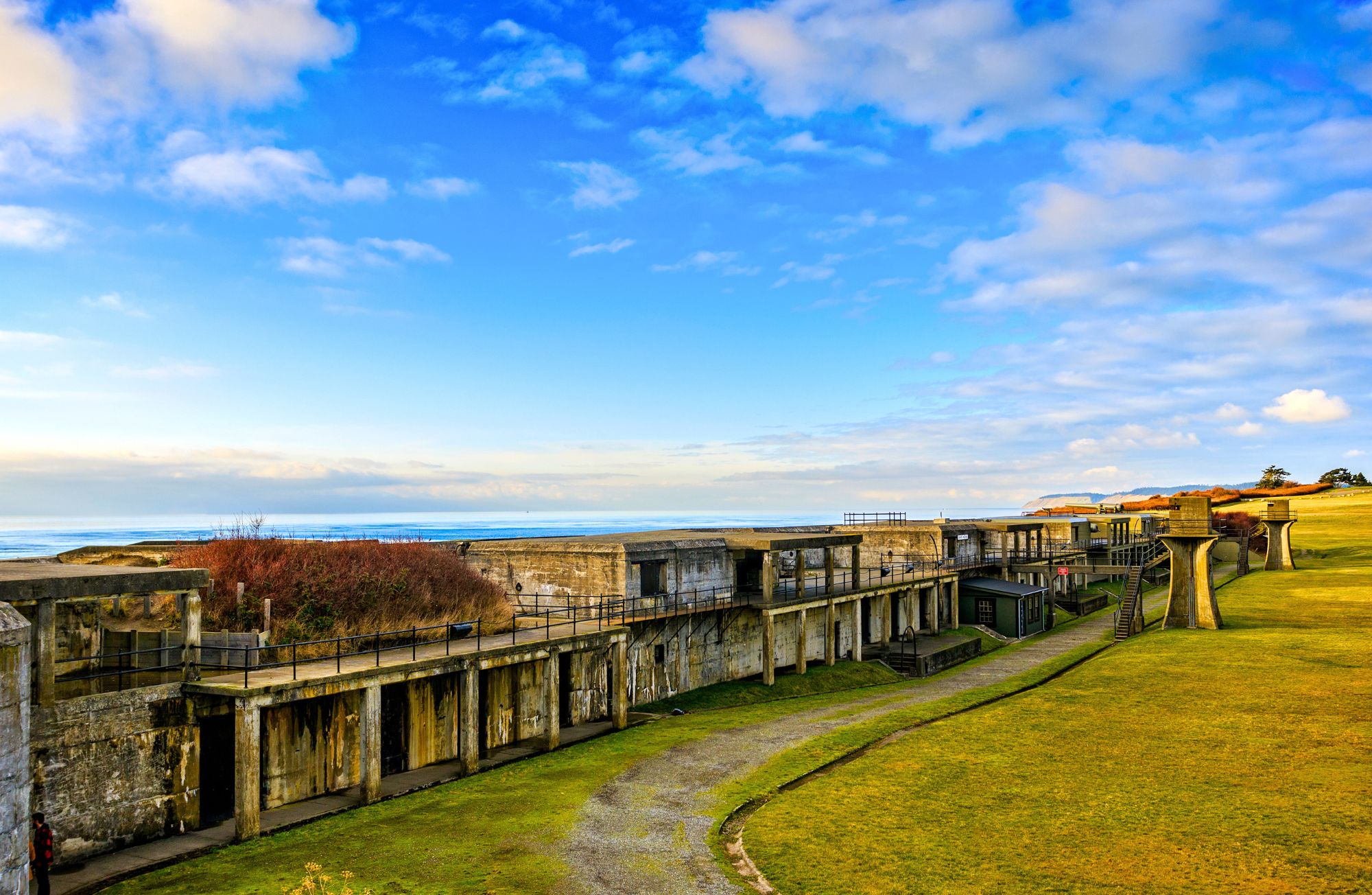
The coast artillery post displays of Fort Casey State Park includes four inactive historic guns atop bunkers, dark tunnels underneath and control towers to climb. It creates an opportunity for both historical education and exploration. One of three forts built in the 1890’s, Fort Casey is part of the “Triangle of fire” safeguarding the entrance to Puget Sound. Now, over 100 years old, the Battery Moore section has recently been restored to keep it safe to explore for future generations. It will look different in person than in the older photo on the front of this card. Take this to compare when you visit! If you are just visiting and find yourself falling in love with Whidbey Island and wishing to tour homes while your here, or wish to learn more about Whidbey Island connect with us.
Check out the rest of Whidbey’s beautiful destinations from this series here.
Visit Fort Casey
Weather in the Pacific Northwest
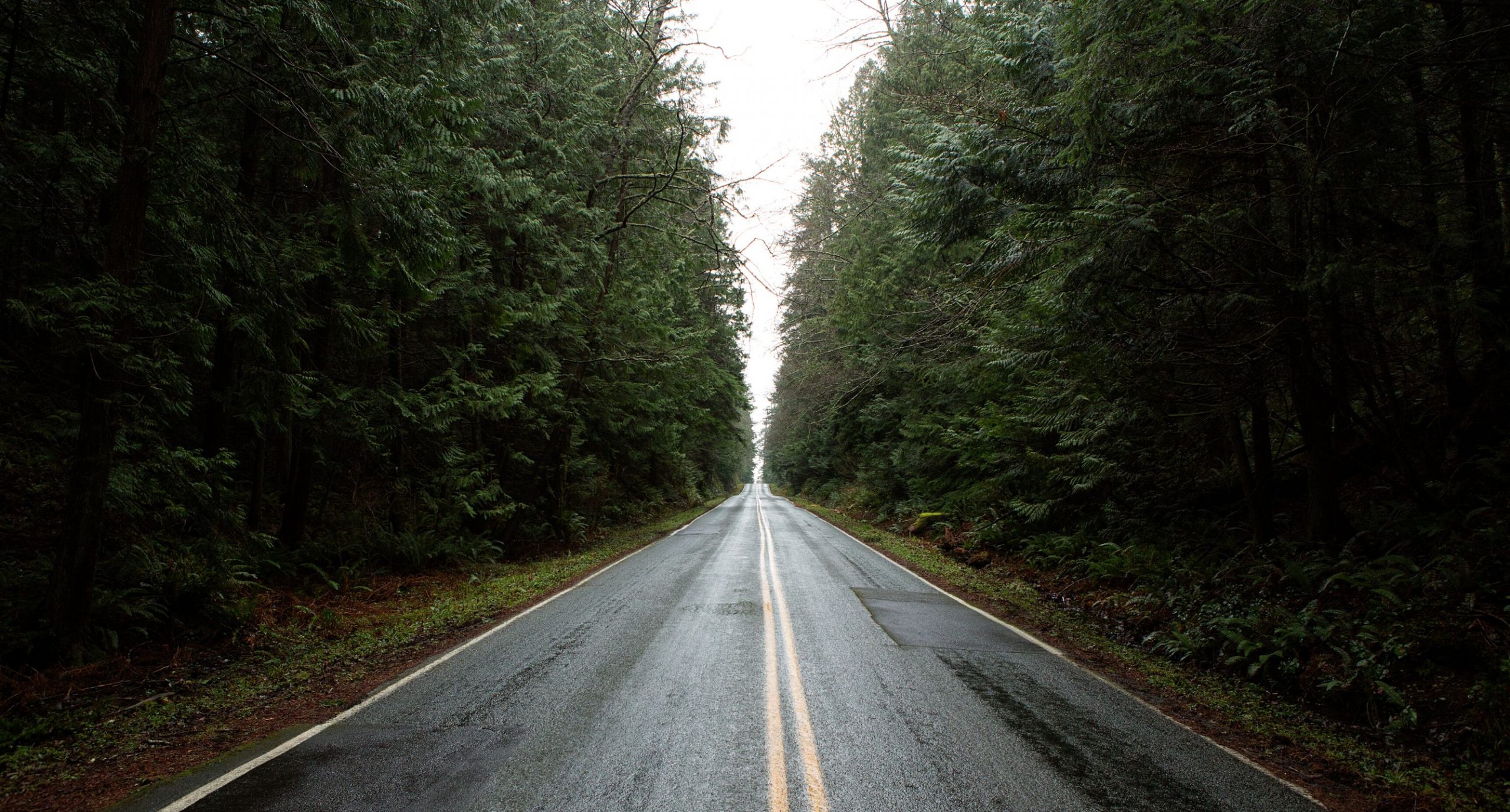
The Pacific Northwest, or PNW, is a region known for its varied and often unpredictable weather. Located in the northwest corner of the United States, the PNW is home to a diverse array of climates and landscapes, ranging from the rainy, temperate rainforests of the coast to the dry, high-desert regions of the interior.
One of the most distinctive features of the PNW weather is the rain. The region is home to some of the wettest parts of the country. Some areas receive over 100 inches of rain per year. While the rain can be a nuisance at times, it is also a vital part of the region’s ecosystem. The rain provides the water needed to sustain the lush forests and vegetation that thrive in the region.
In addition to the rain, the PNW is also prone to fog and mist, especially along the coast. These foggy conditions can last for days at a time, creating a unique and sometimes eerie atmosphere.
Weather on Whidbey Island
Whidbey Island, located in the northwest corner of Washington state, is no stranger to the PNW’s unpredictable weather. Located in the Puget Sound, the island is influenced by both the maritime climate of the coast and the inland climate of the region. As a result, the weather on Whidbey Island can vary significantly from one day to the next. Sometimes a sunshining clear skies day gives way to rain and fog in a matter of hours.
One unique aspect of the weather on Whidbey Island is its location in the rain shadow of the Olympic Mountains. The rain shadow effect occurs when moist air is forced up and over a mountain range. When this happens it causes it to cool and release its moisture in the form of rain or snow. As the air descends on the other side of the mountain range, it warms and becomes drier, creating a “rain shadow” region that receives less rainfall.
Due to its location on the leeward side of the Olympic Mountains, the areas of North and Central Whidbey Island experience this rain shadow effect, resulting in significantly less rainfall compared to other parts of the PNW. While the island still gets its fair share of rain and fog, it is generally drier and sunnier than the surrounding region. Less rainfalls makes it a popular destination for those seeking a respite from the rain.
Despite the often-variable weather, the PNW and Whidbey Island are beautiful and unique places to visit or call home. The diverse landscape and varied climate create opportunities for a wide range of recreational activities. Many people enjoy hiking and camping in the summer to skiing and snowboarding in the winter. So, whether you’re a seasoned resident or a first-time visitor, be prepared for a little bit of everything when it comes to the weather in the PNW and on Whidbey Island.
When you fall in love with the island and want to stay let us help you find your dream home. Connect with us here.
Practical Magic
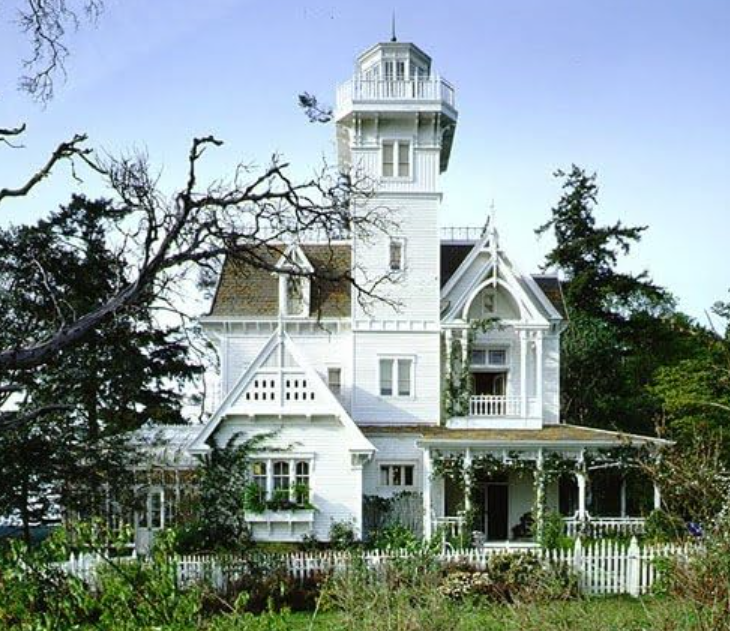
“The small town scenes were filmed in downtown Coupeville, Washington, a Victorian-era seaside port town located on the south side of Penn’s Cove on Whidbey Island.” – IMDB
But you knew that, right?
For being so big and loud, Hollywood’s visits to Whidbey are usually quiet and out of the way. Practical Magic went all out. Twenty-five years ago the film crews and the stars swept in, painted Coupeville white, and played pretend that it was a quaint seaside town – in New England. That’s Hollywood. It’s about time for another visit.
Let’s get the name-dropping out of the way:
Sandra Bullock, Nichole Kidman, Stockard Channing, Dianne Wiest, and some guys. Stars for sure, but pardon locals who also want to spot familiar stores and streets, parks and views.
Local Destinations:
Front Street dominates. The Wharf is in the background. Stores were temporarily redecorated. Much of it was different, but not out of place. Seafood, a farmers’ market, herbs and potions – though they played a different role. Very familiar.
As much as we may feel that they could’ve filmed the entire movie here, they also used places like the San Juans. The stellar house would be a natural tourist site, but it was a prop, torn down after they were done. Has anyone tried to rebuild it?
It is a comedy and a romance. It is also a fantasy, or at least has fantastic magic. It is also a thriller, just in time for Halloween.
You might have to watch it more than once:
Once for the story, once for the setting, and then maybe again. Some people make this a part of their Fall ritual movie night. By the way, the food and drink choices that pair with it are brownies and chocolate cake for breakfast and margaritas at midnight. (Jimmy Buffett fans may also appreciate the latter.)
Filmed on Whidbey:
Practical Magic is part of a long list of movies filmed here.
Some familiar names:
- Free Willy 2
- Snow Falling on Cedars
- The Ring
- Double Jeopardy
- The War of the Roses
- Oh yeah, and Top Gun: Maverick.
Smaller creations are made here, too:
Deception Pass Bridge and the hairpin turn at Ebey’s Landing frequently show up in ads. The ferries are iconic enough to be a proxy for all of Puget Sound.
The perfect location for filming:
While some visitors and locals can complain about overcast skies and dull weather, someone filming a scene can appreciate a lack of shadows. It is easier to stitch retakes into the rest of the film when something filmed in sunshine then has to match something filmed in the shade. Dull weather means less worry about wind and rain – at least compared to a lot of other regions. Not too hot or too cold, usually. We’ve also got talented people living here, great backdrops, and pleasant places for the stars and the crew to stay in.
It may be a twenty-five year old movie, but it skips technology (hey, they got magic!) and Coupeville is charming. Don’t be surprised that October may have a few more tourists visiting. There are some great costume opportunities. Let’s just hope the weather treats us all well.
“But there are some things I know for certain: always throw spilt salt over your left shoulder, keep rosemary by your garden gate, plant lavender for luck, and fall in love whenever you can.” – Sally Ownes, source:IMDB
And,
“There’s a little witch in all of us.” – Aunt Jet Ownens, source: IMDB
Links:
Saving Whidbey
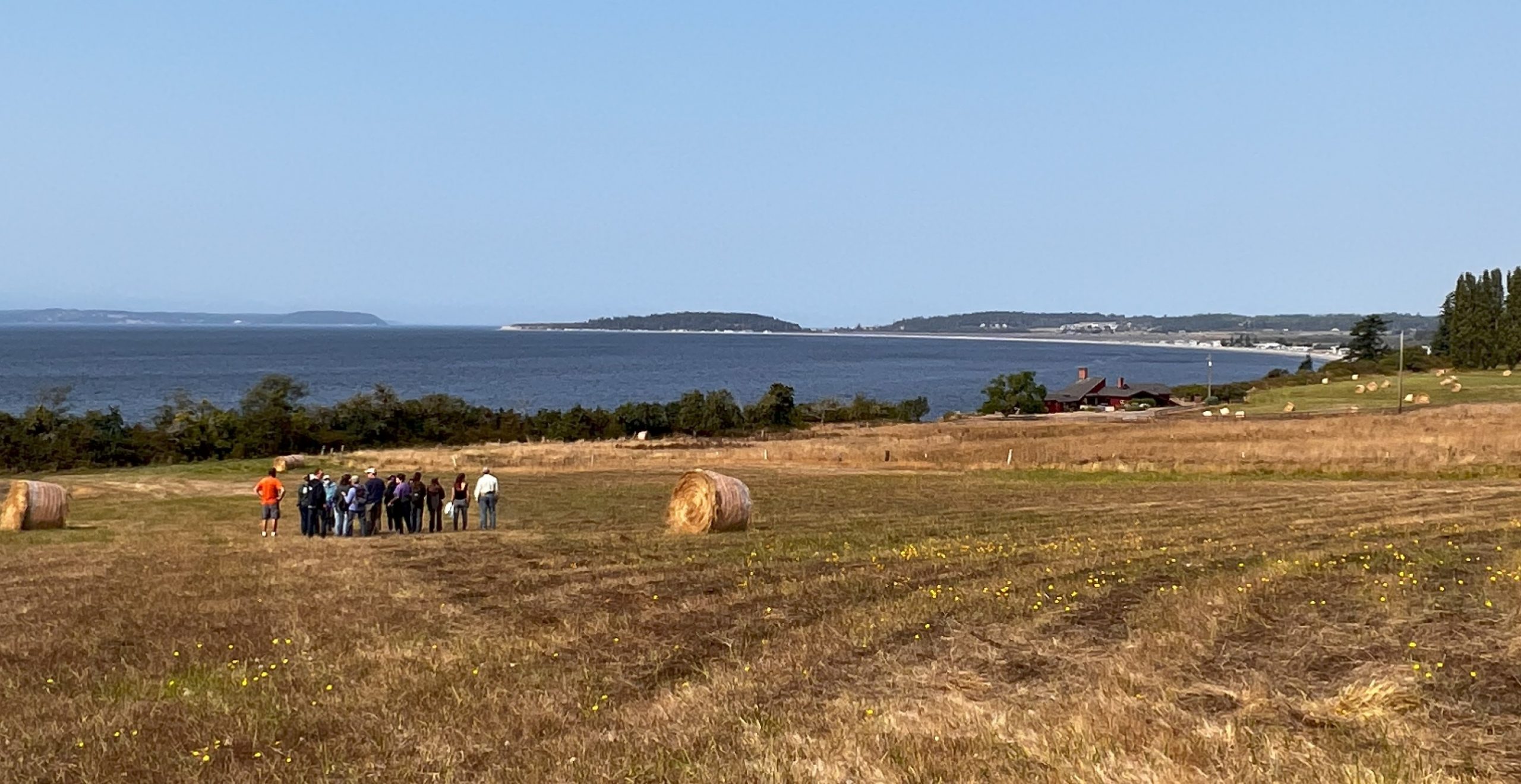
“One of the reasons most people find Whidbey Island so special is the beaches, forests, and farms. This is why having one of the most spectacular properties on the island that incorporates all three being protected forever is such an amazing thing!”
You’ve probably seen them, yet another of Whidbey’s gravel driveways that reach off from the highway, winding through a forest, to – well, someplace only a few know about. They are mysteries, but someone saw some reason to build a road. Sometimes that’s for an estate, or a farm, or simply a view. The Land Trust just acquired one of those properties that has all three.
Saving Whidbey
“What can I do to help protect the island?” That’s the question one realtor asked during a tour of Keystone Farm and Forest Preserve. They asked a good question to the right people because Whidbey Camano Land Trust helps people do that. A group of Windermere realtors were fortunate enough to get an early tour of Keystone Preserve, one of the Land Trust’s most recent acquisitions – and most impressive properties to protect.
History of the Land
For over a century, the land has been farmed with conventional methods (longer than that by Salish Sea Tribes). For decades, one family owned the property. They asked that same question; what could they do to save a farm with an expansive view because of 2/3 of a mile of waterfront. And it has dozens of acres of prairie farmland. And it has dozens of acres of forest upland from the shore. They add up to over 200 acres of a unique estate. Thanks numerous state and federal grants (including help from the Navy), some fortunate situations, and a bit of good luck, Keystone Farm and Forest Preserve will continue to be farmed and preserved.
Most of the folks on the tour were stopped in their tracks by the view as the long driveway rounded the bend from forest to farm, from trees to pastures, and expansive water views. Look left down Admiralty Inlet. To the right is Admiralty Cove. Straight across is the Olympic Range, Port Townsend, and out to the Strait of Juan de Fuca.
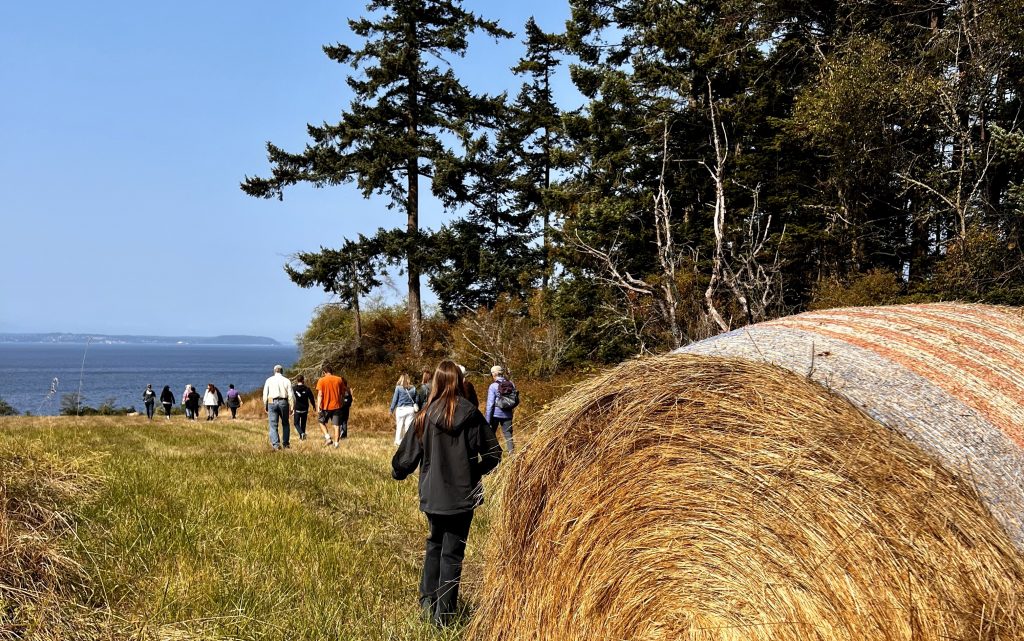
In April 2022, the Lea family sold the property. They had owned the property since 1947, but families shift, and they realized that they’d rather let someone else own and use it than leave it effectively vacant, locked away without anyone being able to enjoy it. The Land Trust stepped in, with help, of course. In a couple of years, Keystone Preserve will be opened to the public. Patience is necessary because a driveway that suffices for a family and a farm isn’t enough for two-way traffic, especially if emergency vehicles need access. The plan is to have parking for school buses and a shelter for learning.
There’s history here. The water, the prairie, and the forest are fertile. The Skagit people knew its value. They even maintained the prairie through controlled burns. The open land that reaches down to the water was so distinctive that early explorers noted it. One ship’s Captain, Robertson, returned and helped homestead it circa 1850.
A Budding Future
The future is also being established because the Organic Farm School has already been invited to plant trial fields. And, of course, it will be a place for people to enjoy. It is the nature of the Land Trust that the future can be preserved. That era has already begun.
That’s the plan. Plans require action, so sign up with the Land Trust to volunteer. The quicker the work gets done, the sooner people can visit for the sake of visiting. In the meantime, volunteers get early access to the views. Old farms are fertile, so there will be some weeds to tend. As the site gets prepared for the public, there will be opportunities to help. Maybe linger a bit after the work party is done.
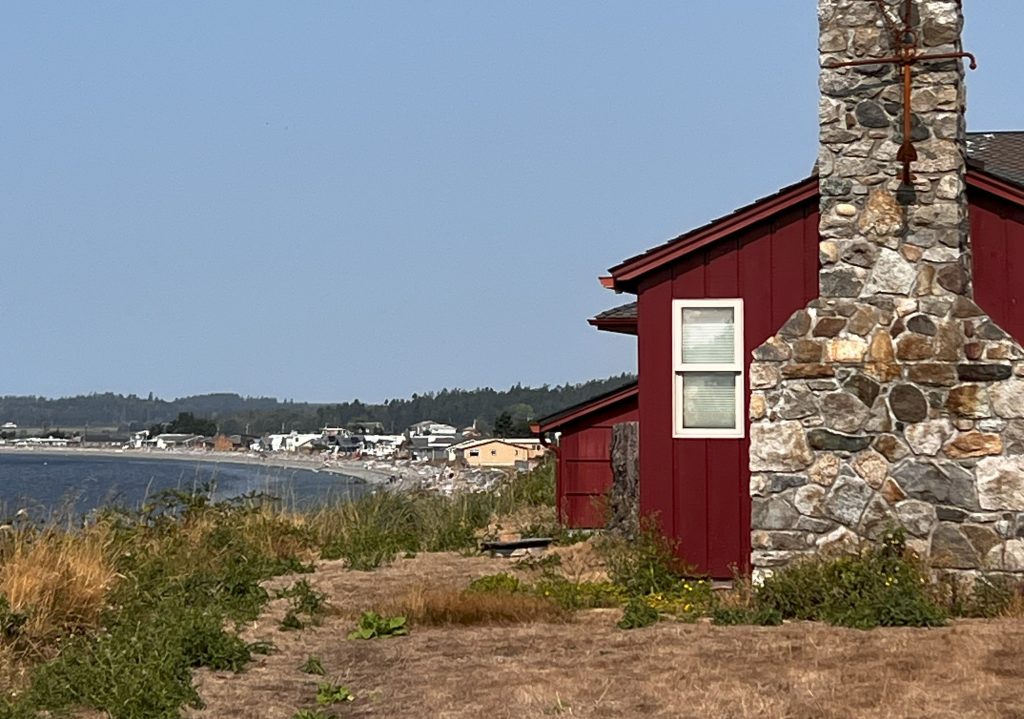
Find a comfy spot and watch for raptors overhead, whales and seals and salmon, and almost every big ship that’s using Puget Sound to get to our deep, sheltered harbors. Or get up and wander along the forest trails.
The property is also a place to learn about what it takes to live on the land on an island. Sites that look ideal can require a bit of research, thought, and consulting with experts. How close can a house be to the water, considering waves that can redistribute a bluff? Upland forests grow because they have access to water, which might mean ravines or wetlands. Owning such a property is also a lesson in how forests collect and filter rainwater, as well as stabilize bluffs and replenish our aquifers. Sometimes, trees may be weak or in a dangerous spot; but, it was pointed out that trimming the difficult parts while leaving the bottom thirty feet provides some of the benefits of habitat and soil stability. Learning about such issues by visiting a property is simpler than doing so in the middle of a transaction.
The land will restore something closer to its original nature, and it can be valuable to see natural forests, natural bluffs, and natural shorelines. The Land Trust doesn’t buy land to simply buy land. Keystone Farm and Forest Preserve will help the health of the habitat for lots of wildlife, particularly salmon and other fish that rely on eelgrass and bull kelp. It will provide a place for learning and demonstration. Protecting land also means protecting our drinking water by ensuring we have pockets of aquifer recharge.
The day of the visit ended with a show of seals and salmon along the shore.
People on Whidbey are proud of its rural character; so, preserving a farm, a forest, and a shoreline makes sense. “What can I do to help protect the island?” Be like the Lea family and think of the future.
“It will be a great place for people to learn about organic farming practices, how to manage private forests for health, natural shoreline protection techniques, and an additional beautiful and scenic place for walking. You can learn more about this property and all the Land Trust properties on their website. Loads of their properties are open to the public with great trail systems.” There’s probably one near you that you didn’t even know existed!
Firefighting Island Style
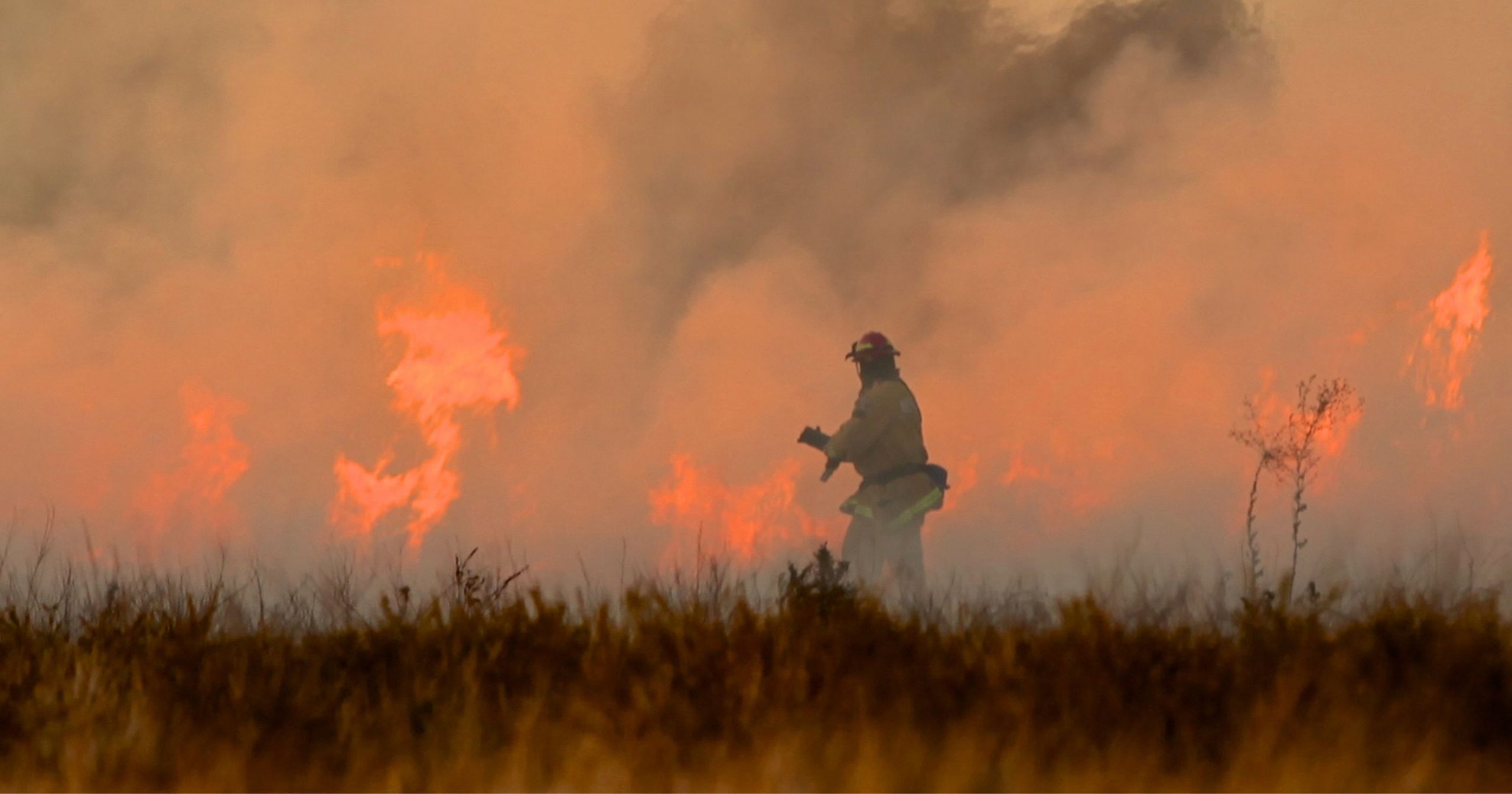
Firefighters, we respect them. We get out of their way when they’re racing to a scene. We crowd around their trucks when they’re at a fair or a parade. We can tend to think that every firefighter is like every other firefighter, hanging out at a fire station while waiting for a call that demands immediate action. Yes, and no.
But what does firefighting look like on an island? Follow along as we discuss firefighting island style.
Firefighting Island Style
Whidbey is a mix of five fire districts. Three County districts (North, Central, and South), the City of Oak Harbor, and the Navy.
Oak Harbor is a city with paid firefighters and a place where a lot is going on in a small space. Trucks have to navigate a grid of streets and the traffic on them. Houses are close and that can mean fires are close, too, but so are fire hydrants. There are plenty of stereotypes that can apply. Spotted mascot optional.
In most parts of the country that might be enough, but the island is large enough and long enough that some other solutions are necessary. If the neighborhood is remote enough, they may have some creative solutions to fight fires in the interim after getting to safety and making that call to 911. An easy situation to imagine is a waterfront house that may require a fireboat. It takes time to collect the crew, launch the boat, and power their way to the site – tides, currents, and weather allowing. A lot can happen in the first few minutes of a fire. Any help can be appreciated – and incredibly valuable.
Rural areas also have to guard against brushfires and barn fires. Long roads mean accidents can happen far from the station. Even places that are accessible by a pickup may be too windy and twisty to maneuver in a firetruck, which eventually also has to turn around and get back to the station. Some fires may even be on boats, both in the marina and off-shore.
A Unique Mix
At the other end of the scale is the unique fire district that is the Navy’s. Airports have special requirements and tools, and military airports have to handle even more specialized situations because of what their planes can carry. The need for an immediate response is an understatement.
Fortunately, while there are various types of firefighting arrangements, when the need is there they all gather to help each other. City, base, and rural doesn’t matter as much as ‘where is the fire and how can we help?’
If you haven’t heard much about the variety, great! That means the crews are doing what they have to do to stay out of the headlines. In firefighting, boring can be good. Too exciting can be too much. This is firefighting island style.
Firefighting Crews
Whidbey has some other attributes worth remembering. Whidbey is a lot of small-town America wrapped around a city and a base. Most of it has fewer people because it is rural. That also means that firefighting crews can sometimes be understaffed. (Pay attention to the election initiatives to see their current situation.) While rural can be quaint, sometimes the small-town nature that leads to smaller firefighting crews becomes critically apparent. A few places have paid firefighters, but much of the island is served by a few stations with a few paid firefighters who rely heavily on backup volunteers. They have rules to follow, just like the rest of us. (In 2018, another fire department in WA was cited for violating the state’s version of OSHA’s two-in two-out requirement.) Of course, more paid firefighters mean they need more budget. Not an easy problem. Think about that. A few paid people; and other people who risk their lives for us for free. They deserve greater thanks than they receive. (Please, volunteer!)
Surprisingly the bulk of their workload comes from medical emergencies. Over 60% of their time is spent with Basic Life Support calls where they work side by side with the paramedics. In some places that is over 80%. They have to be ready for everything: motor vehicle accidents, rescues on land or on water, storm responses, traffic control, power outages, and downed lines. It isn’t just about fires and ambulances.
So much for sitting around the firehouse. These people are busy.
How you can help
Of course, there are ways to keep them less busy (and keep costs down). Much of this is variations of the messages we’ve heard since school: follow safety instructions, keep fresh batteries in smoke detectors, make sure any electrical work is done right, remove trash and other flammables. Some things are even simpler: don’t leave burning candles or fire unattended, don’t burn during burn bans, handle fireworks legally and safely. Keep fire extinguishers handy and up-to-date.

There are plenty of other precautions, but that’s part of being a responsible adult.
How this relates to homeowners on Whidbey
Understanding a place’s fire situation is also something to keep in mind when considering buying a house. What is the firefighters’ response time? Where’s the nearest hydrant or nearest firehouse (is it even staffed)? Is the house marked well enough for a crew to be able to find it in the dark, maybe during a storm? Your insurance company may have some ideas to add to the list.
If you live in rural Island County some additional services they might offer include: installing high visibility house address numbers; home safety surveys to reduce the risk of harm from fire, accident, or illness; smoke and carbon monoxide detector check; fire inspections for businesses; CPR training; child car seat safety checks.
Chief Helm says “In an emergency, we need to be as efficient as possible, and the partnership between homeowners and the fire department is critical. Maintaining reflective address signs and driveways that fire trucks can navigate down is very important. One of our biggest hurdles is locating the emergency in a hurry, and then navigating a driveway that may or may not be able to handle a 40,000lb, 11-foot tall truck. Many times, the storybook-style narrow wandering lane, sounds peaceful and relaxing, but can pose serious problems if our trucks cannot access your house. Please remember to maintain not only driveways but the surrounding vegetation and hanging branches that will damage a truck the size of ours. Together with your help, we make this Island a safer place to live and work. We are more than happy to visit your driveway and test fit our apparatus, as well as bring you a reflective address sign anytime.”
One of the most delightful rural traditions on Whidbey is the annual Santa Mobile where Central Whidbey Fire Department drives around different neighborhoods with Santa Claus on top of one of their Fire Engine for multiple nights in a row in December. They will put out a schedule and a map on their Facebook page in preparation every year. Kids love it! It’s also a fundraiser for collecting food and donations for the food pantry in Coupeville.
Fortunately, most folks pay attention to safety. It’s part of being a homeowner and a good neighbor. Do enough of those boring but necessary steps, and free up time to relax and enjoy the rest of island life. Just check for burn bans before stoking up a campfire.
If you have additional questions about firefighting island style your reliable Windermere real estate agent can help you get them answered. Don’t have an agent? Connect with us here.
Sailing Whidbey
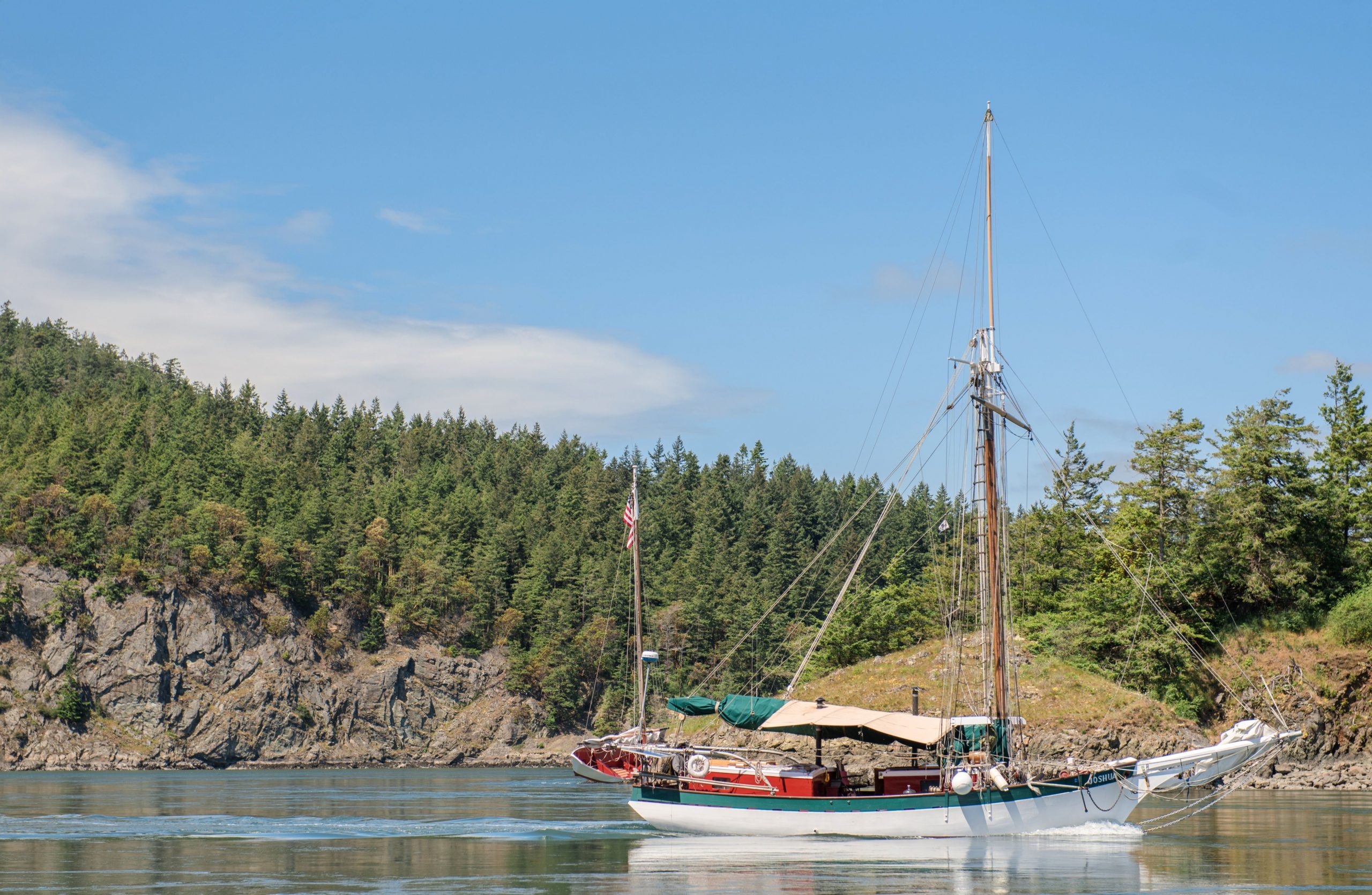
It is no wonder tourists and residents alike enjoy setting their sails and heading out to sea to enjoy our gorgeous Puget Sound waters. Whether by powerboat, sailboat, or even kayak, Whidbey is the perfect place to explore by water. Catch a glimpse of whales feeding in Saratoga Passage, seals cruising under Deception Pass, Eagles soaring past Ebey’s Landing, or if you are really lucky maybe you will catch sight of a magnificent pelican near Honeymoon Bay. It’s not a relaxing endeavor, with some of the world’s most complex currents, thousands of “islands”, and large river deltas to navigate, the Puget Sound requires lots of skill and knowledge to enjoy safely.
Check out the rest of Whidbey’s beautiful destinations from this series here.
Boating Around Whidbey
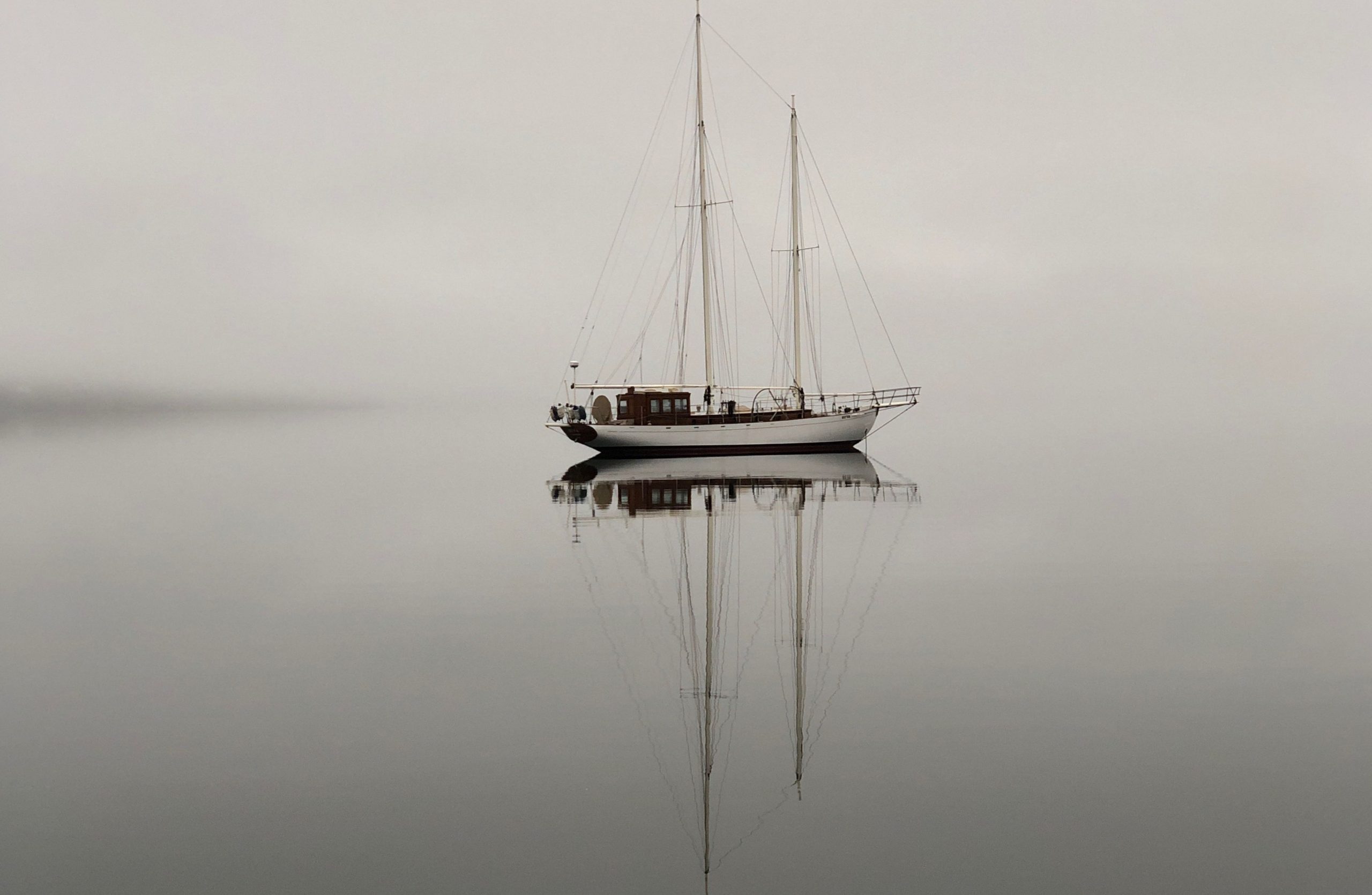
It has been well over 200 years since the waters around Whidbey saw its first sailboat with the explorers of the late 18th century. Just like Captain Vancouver in 1792 people still have the urge to explore this amazing inland waterway from the deck of a boat. Strong currents encourage many to forego sailing in favor of motoring quickly from point A to B. Others like the challenge and quieter method of utilizing the plentiful wind-power. Whichever way floats your boat make sure you get out on the water before the season is over!
Check out the rest of Whidbey’s beautiful destinations from this series here.
View this post on Instagram
Top 10 Best Things About Whidbey Island
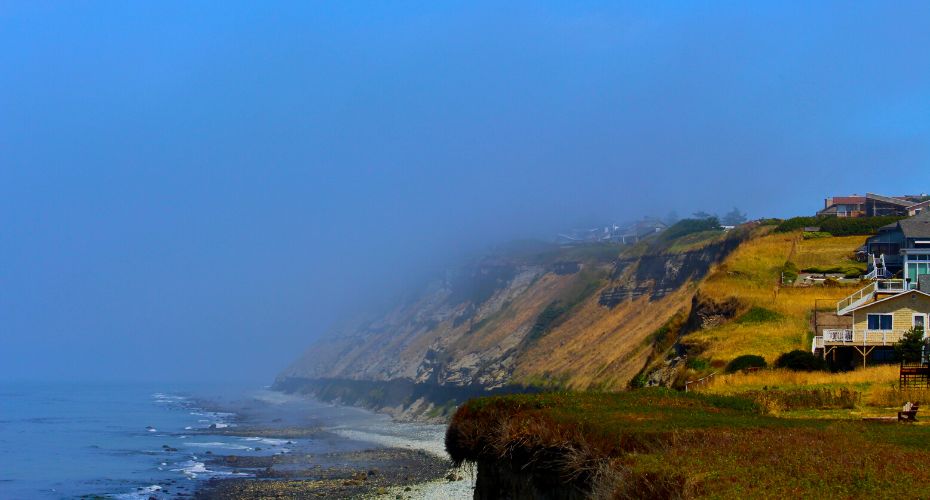
Whidbey Island is a beautiful and picturesque destination located in the Puget Sound, just a short ferry ride from Seattle. With its stunning natural beauty, rich cultural heritage, and abundance of outdoor activities, it’s no wonder that Whidbey Island is a popular destination for travelers and residents alike. In this blog, we will explore the top 10 best things about Whidbey Island, from its scenic beauty to its thriving arts and culture scene.
Top 10 Best Things About Whidbey Island
- Scenic beauty: Whidbey Island is known for its breathtaking views of the Puget Sound and the Olympic Mountains. Whether you are driving along the winding roads or hiking through the forests, you will be treated to stunning vistas at every turn.

- Outdoor activities: With its numerous parks, trails, and beaches, Whidbey Island is a paradise for outdoor enthusiasts. Whether you are into hiking, biking, kayaking, or just soaking up the sun on the beach, there is something for everyone on this beautiful island. One of our favorites is Ebey’s Landing National Historic Reserve in Coupeville.
- Small-town charm: Despite its proximity to Seattle, Whidbey Island has a laid-back, small-town feel that is perfect for those who want to escape the hustle and bustle of the city. The island’s charming towns and villages offer a variety of local shops, restaurants, and breweries that are worth exploring.
- Local produce and seafood: Whidbey Island is known for its rich agricultural heritage, and the island is home to a number of farms that produce fresh, locally grown produce. The island is also home to a thriving seafood industry, with local fishermen bringing in a variety of fresh, locally caught seafood. Seabolts comes highly recommended.
- Wineries and breweries: Whidbey Island is home to a number of wineries and breweries that offer tastings and tours. These local businesses offer a chance to sample some of the best wines and beers produced on the island.
- Arts and culture: Whidbey Island is home to a thriving arts scene, with numerous galleries, theaters, and music venues that offer a variety of performances and exhibitions throughout the year. The island is also home to a number of festivals and events that celebrate the island’s rich cultural heritage.
- Accommodations: Whether you are looking for a luxury resort or a cozy bed and breakfast, Whidbey Island has a wide range of accommodations to choose from. The island’s many hotels, inns, and vacation rentals offer a variety of options for travelers of all budgets and preferences.
- Dining: With its abundance of locally grown produce and seafood, it is no surprise that Whidbey Island is home to some excellent restaurants. From seafood shacks to fine dining establishments like Frasers Gourmet Hideaway or China City, the island has something for every taste and budget.
- History and heritage: Whidbey Island has a rich history and cultural heritage that is worth exploring. The island is home to a number of historic sites, including Fort Casey State Park, which offers a glimpse into the island’s military past.

- Accessibility: Despite its rural location, Whidbey Island is easily accessible from Seattle and other major cities in the region. The island is just a short ferry ride away, making it a perfect getaway for those looking to escape the city for a few days.
Whidbey Island is a truly special place that has something for everyone. From its breathtaking views and outdoor activities to its charming small towns and delicious local cuisine, there’s no shortage of things to see and do on this beautiful island. Whether you are planning a weekend getaway or a longer vacation, Whidbey Island is the perfect destination for those who love nature, culture, and a slower pace of life.
If you are thinking about moving to Whidbey or just have questions about the area please do not hesitate to connect with us here.
View this post on Instagram

 Facebook
Facebook
 X
X
 Pinterest
Pinterest
 Copy Link
Copy Link



